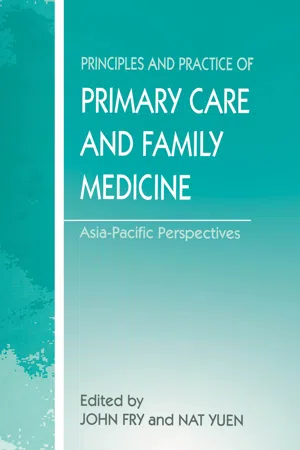
- 348 pages
- English
- ePUB (mobile friendly)
- Available on iOS & Android
About this book
Guidelines are powerful instruments of assistance to clinicians capable of extending the clinical roles of nurses and pharmacists. Purchasers and managers perceive them as technological tools guaranteeing treatment quality. Guidelines also offer mechanisms by which doctors and other health care professionals can be made more accountable to their patients. But how can clinicians tell whether a guideline has authority and whether or not it should be followed? Does the law protect doctors who comply with guidelines? Are guideline developers liable for faulty advice? This timely book provides a comprehensive and accessible analysis of the many medical and legal issues arising from the current explosion of clinical guidelines. Featuring clear summaries of relevant UK US and Commonwealth case law it is vital reading for all doctors health care workers managers purchasers patients and lawyers.
Frequently asked questions
- Essential is ideal for learners and professionals who enjoy exploring a wide range of subjects. Access the Essential Library with 800,000+ trusted titles and best-sellers across business, personal growth, and the humanities. Includes unlimited reading time and Standard Read Aloud voice.
- Complete: Perfect for advanced learners and researchers needing full, unrestricted access. Unlock 1.4M+ books across hundreds of subjects, including academic and specialized titles. The Complete Plan also includes advanced features like Premium Read Aloud and Research Assistant.
Please note we cannot support devices running on iOS 13 and Android 7 or earlier. Learn more about using the app.
Information
1
Health Disease and Care in the Community: Challenges and Dilemmas
i. Introduction
What is ‘health?
What is ‘disease’?
- mortality
- morbidity
- infant and maternal mortality
- life expectancy.
What is ‘care’?
- Who requires care and who should provide it? Special at-risk groups should be defined and targeted. It should not be assumed that the primary physician has to do everything: a team approach is best, with shared care being allocated to nurses and others in a collaborative manner.
- What care is possible and what has been shown to be effective? Constant review and reappraisal are essential.
- How is care provided? It should not be assumed that present methods are the best, or that they are unchangeable. Constant experimentation and review are necessary.
- Where is care provided? Many options and models are available, from the single-handed primary-care physician working alone, through partnerships and groups to large clinics or hospital units. Sensitive planning and political decisions are necessary to decide on the best ways and best places to provide primary care in the community. Again, the present systems must not be accepted as inviolable.
- When to care? This relates to the possibilities for primary, secondary and tertiary forms of prevention. Immunization, screening, early diagnosis and treatment emphasize the community aspects of primary care, with its responsibilities beyond the doctors’ offices and the hospitals.
- Why care? This question comes back to the issues of why particular promotional, clinical, diagnostic and therapeutic activities are carried out. There should be good positive reasons.
Current realities
ii. Social, Environmental and Economic Determinants
Table of contents
- Cover
- Half Title
- Title Page
- Copyright Page
- Contents
- Contributors
- Foreword
- Preface
- 1 Health, Disease and Care in the Community: Challenges and Dilemmas
- 2 Patients and Consumers
- 3 Provision of Health and Medical Care: Systems, structure and service
- 4 Health Economics
- 5 Primary Health Care and Family Medicine: Coping with work, demand and expectations
- 6 Practice Organization and Management
- 7 Data and Information Technology
- 8 Education and Training
- 9 Assessment and Continuing Medical Education
- 10 Research
- 11 Quality Assurance
- 12 Laws, Ethics and Standards
- 13 The Emergence of Family Practice
- 14 The Past Present and Future
- Index